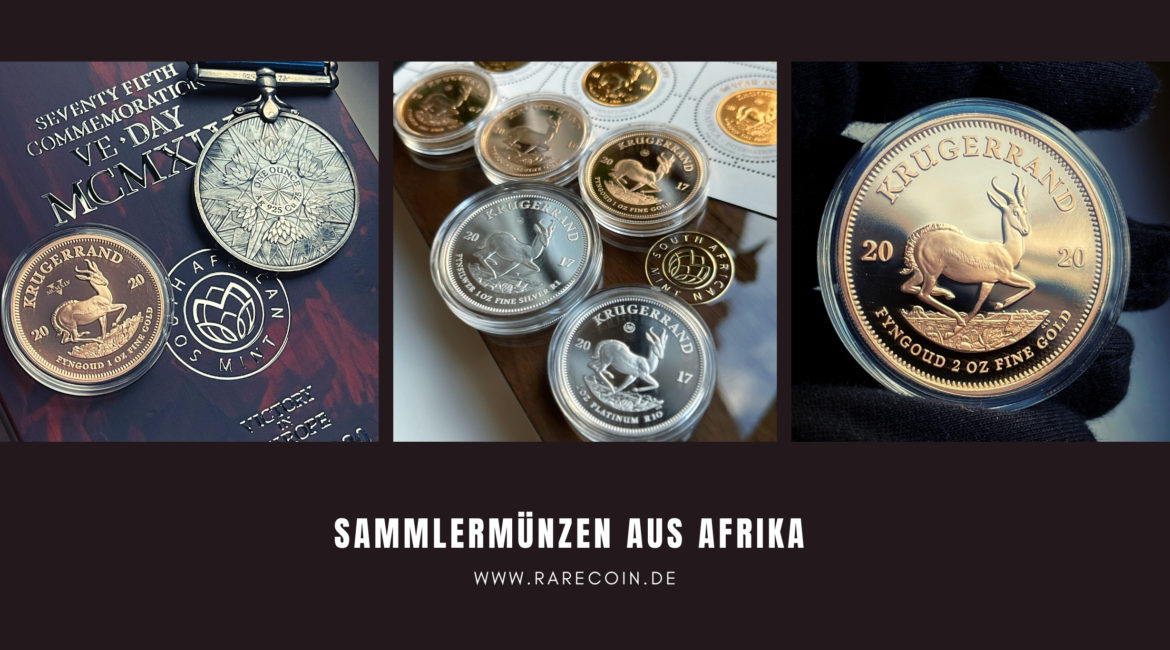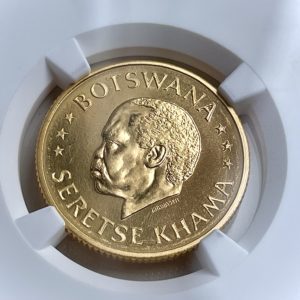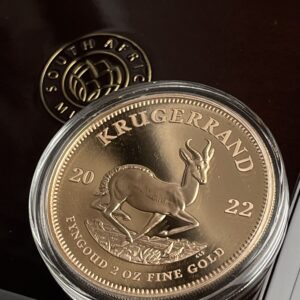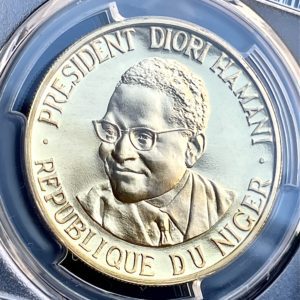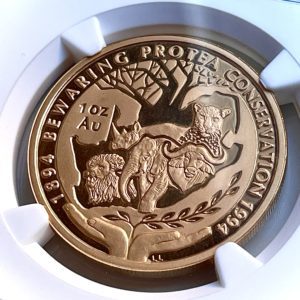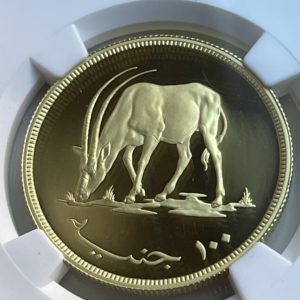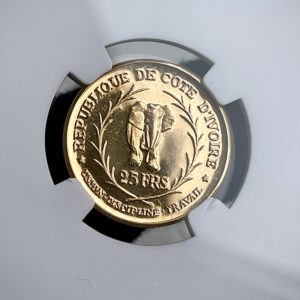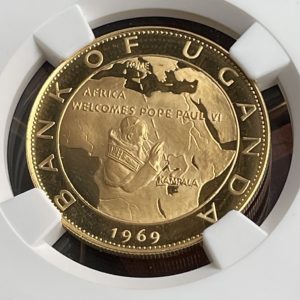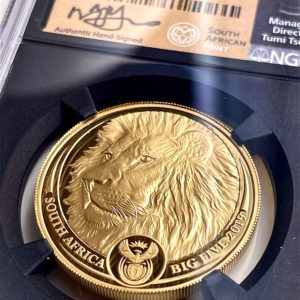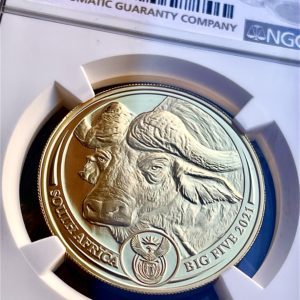The Rand Refinery, or also South African Mint is located in Germiston, South Africa. Gold mining companies Anglo Gold Ashanti, Goldfields, DRD Gold as well as Avgold established this in 1920. The refinery today represents the wealth of South Africa, distinguished by the Krugerrand, the Natura and Protea gold coin, but also other important investment and collector coins. South Africa is one of the richest continents in the world in terms of the number of mines.
In addition to the most famous collectibles, there are also gold coins from Lesotho, Swaziland or Ethiopia, which are still highly sought after and sought after on the collector’s market. However, to introduce the Rand Refinery in more detail, the most popular bullion and collectible coins are highlighted below. Among others, such well-known collector coins as Krugerrand, Natura and Protea are described in more detail.
The heart of the Rand Refinery
Above all, the refinery is known for the production of theKrugerrand (international Krugerrand) – the most popular and well-known bullion coin in the world. It was named after the South African politician Paul Kruger and the South African currency “Rand”.
“Rand” is an abbreviation for the place “Witwatersrand”, where gold was first found in 1886. Even today, most of the gold for Krugerrand production comes from this place. Unmistakably, the gold bullion coin is distinguished by its appearance. The head side of the Krugerrand features a profile portrait of Paul Kruger, framed by the name of the country of origin in Afrikaans and English (Suid-Afrika/South Africa). The reverse side features a running springbok – South Africa’s national animal. On the sides of the animal you can read the year of minting. Below it, the fine gold content is indicated in oz.
The Krugerrand is made from a gold alloy of 91.66% or 22 carats, to which some copper is added. This gives the coin its characteristic red tint. With 22 carats, it is very robust and scratch resistant. This makes it theoretically possible to circulate them as actual currency, rather than holding them solely as collectibles. The collectible is available as the following units: 1 oz, 1/2 oz, 1/4 oz and 1/10 oz. Depending on the unit, coins vary in their gross weight, fineness, fine gold content, thickness and diameter.
The Rand Refinery is where the Krugerrand blanks are produced. They are minted at the South African Mint Corporation. Since 2018, the coin is also available in silver. As for the price, the prices of other silver bullion coins serve as a guide for the Krugerrand silver coin. In a small edition, it is also produced as a “proof”, in which the portrait of Paul Kruger and the springbok can be seen matted against a reflective background.
History of the Krugerrand
After their sales peak in 1978, when over 6 million 1-ounce coins were sold, production numbers plummeted in the mid-1980s. In 1986, Japan, the United States, and the European Community had adopted sanctions against South Africa’s apartheid regime. This was followed by a series of financial sanctions, such as a ban on imports of Krugerrands, iron and steel products, agricultural products and exports of petroleum products. This entailed a boycott. The sanctions themselves have not brought any political changes, however, the demand for coins, especially Krugerrand and other collector coins has decreased.
Due to apartheid and the associated boycott by other states, the supply was also reduced, with significantly fewer Krugerrands being minted. Therefore, these days, for the most part, have a enormous collector value. This applies in particular to
Coins from the years
1992 till 1999
to.
The bank then exchanged the Krugerrand for the equivalent
Maple Leaf bullion coin
one. In 1999, however, the import ban was lifted again and production figures rose again. Today, the Krugerrand has the largest market share among gold bullion coins.
The value of the Krugerrand in terms of buying and selling is calculated daily and is based on the current gold price. For the most part, the buying price is lower than the spot price, while the selling price is higher than the spot price. The large 1 oz coin also receives a comparatively smaller minting premium than smaller coins, such as the ½ oz, ¼ oz and 1/10 oz coins.
The Natura gold coin – a gold coinage with a changing motif
Among the rarest collectible coins and the most important representatives of the South African Mint in South Africa is also the
Natura gold coin
. This coin has been minted since 1994. It distinguishes South Africa’s first fine gold coin series. The Natura has 24 karats and is available in 1 oz, 1/2 oz, 1/4 oz and 1/10 oz. It is only used in the
Proof condition
issued, but there is also a small,
exclusive number of prestige sets
.
This collector coin is special because it has an annually changing motif. The Natura, minted exclusively in gold, appears in collections that are limited in number. That makes each gold piece unique and rare. It is internationally popular among collectors due to its variety of motifs.
In the years 1994 – 1998 the “
Big Five Series
” manufactured. 1999 – 2004 followed the “Wild Cats of Africa Series”, which led to the “Giants of Africa Series” 2005 – 2008. The following years 2009 – 2010 were characterized by the “Safari Series” and finally the “Nature`s Families Series” 2011 – 2013 was produced.
Motifs
Since 2019 there is also the
new series “Big Five
of the South African Mint. It was released in 2019 – 2021 as Series I, while Series II has been around since late 2021. Both series include five motifs each, with a new animal motif coming out every 6 months. Among them so far are the motifs Lion, elephant, rhino, leopard and buffalo to find. Meanwhile, these coins are minted in gold, silver and platinum.
In the past, the kudu, the antelope, the cheetah, the giraffe, the white rhino, the meerkat and the zebra also appeared as motifs. However, in addition to these aforementioned species, numerous other animal motifs also shine on the head side of Natura.
New bullion or collectible coins with elephant or leopard symbols are also in high demand among collectors. These are made in Somalia and minted in Germany. So, in addition to Natura, collectors will find popular coinage with animal symbols from Africa outside of the Rand Refinery.
So, given the huge biodiversity of stunning animals on the African continent, it can be said that Natura captures and shapes a bit of this beautiful diversity and beauty – literally.
But the beauty of Africa is not only characterized by its biodiversity of animals. This is also reflected in the plant world in an amazing way. A notable example, which also receives prestige in the minting of coins, is the Protea.
Protea – the beauty of South Africa
The
Protea
, lat. Protea cynaroides, belongs to the genus Protea in the family of the Silver tree family. It is a small evergreen shrub with spatulate, glossy smooth leaves and pink flowers that can reach 25 cm in diameter. It was named by Carl von Linné after Proteus, the sea god.
The Protea is widespread in the
dry areas of the southern hemisphere
. The 114 species of Protea bloom everywhere in the African spring (September) and are still particularly magnificent until October. Especially they can be found in the mountainous regions of South Africa. With its beauty, the plant adorns the coat of arms of South Africa on the breast of a secretary bird, which is enthroned with outstretched wings above a shield. The protea here symbolizes the beauty of the land.
But not only on the coat of arms, but also on the
silver and gold coin
it can be found since 1986. At the South African Mint, the coin was minted for the first time and was the first fine gold coin of South Africa. In the first ten years of production, between 1986 and 1996, the Protea possessed by its, production which resembled the Krugerrand, 22 carats.
Since 1997, however, it has featured 24 carats and, with a 25 Rand face value at full ounce, is considered official currency of South Africa. Since the Protea is imposed significant surcharges over normal bullion coins, it is a valued collector’s item. To recognize on the coin, of course, the protea plant.
If you want to buy these three unique collector coins, take a look at our
our store
to. There are also many other desirable rarities that may be of interest to collectors.
Conclusion
Collectible coins from the African continent such as Krugerrand, Natura and Protea continue to be both a popular and valuable investment opportunity for investors and a precious rarity for passionate collectors. On the one hand, they stand for the beauty of nature and biodiversity of numerous countries on the African continent, and on the other hand, they often carry a large piece of African history with them. Their fine, ornate and varied embossing as well as the high-quality manufacturing make them special collector’s items. But also the rarity and uniqueness of some coins give them tremendous value.
Perhaps also interesting:
Interesting gold coins from Africa:
-
Botswana – 1966 – 10 Thebe – Independence – 10.16g – Gold – NGC MS67
975,00 €plus shippingDelivery Time: approx. 2-3 days (excluding Saturdays, Sundays and public holidays) -
Krugerrand 2022 Proof 2 oz gold coin with original box and COA
5.895,00 €plus shippingDelivery Time: approx. 2-3 days (excluding Saturdays, Sundays and public holidays) -
Niger – 1960 – 100 Francs – Independence – 28.8g Gold – PCGS PR66 Cameo
2.575,00 €plus shippingDelivery Time: approx. 2-3 days (excluding Saturdays, Sundays and public holidays) -
Protea 1 oz 1994 Big Five – NGC PF68 UCAM
2.695,00 €plus shippingDelivery Time: approx. 2-3 days (excluding Saturdays, Sundays and public holidays) -
Sudan – 100 Pounds – Conservation – Scmitar Horned Oryx – 1396/1976 – 33.43g Gold – NGC PF68 UCAM
3.250,00 €plus shippingDelivery Time: approx. 2-3 days (excluding Saturdays, Sundays and public holidays) -
Ivory Coast – 1966 – 25 Francs – Felix Houphouet-Boigny – 8g Proof Gold – NGC PF67 Cameo
975,00 €plus shippingDelivery Time: approx. 2-3 days (excluding Saturdays, Sundays and public holidays) -
Uganda – 100 Shillings – 1969 – Apostolic Visit Pope Paul VI. In Uganda – 13.82g – NGC PF67 Ultra Cameo
1.850,00 €plus shippingDelivery Time: approx. 2-3 days (excluding Saturdays, Sundays and public holidays) -
South Africa Big Five 2019 – Lion – Series I – 1 oz PP Gold – NGC PF70 UCAM – First Day of Issue
6.950,00 €plus shippingDelivery Time: approx. 2-3 days (excluding Saturdays, Sundays and public holidays) -
South Africa Big Five 2020 – Rhino – Series I – 1 oz PP Gold – NGC PF69 UCAM – First Day of Issue
4.900,00 €plus shippingDelivery Time: approx. 2-3 days (excluding Saturdays, Sundays and public holidays) -
South Africa Big Five 2021 – Buffalo – Series I – 1 oz PP Gold – NGC PF70 UCAM
4.500,00 €plus shippingDelivery Time: approx. 2-3 days (excluding Saturdays, Sundays and public holidays)

